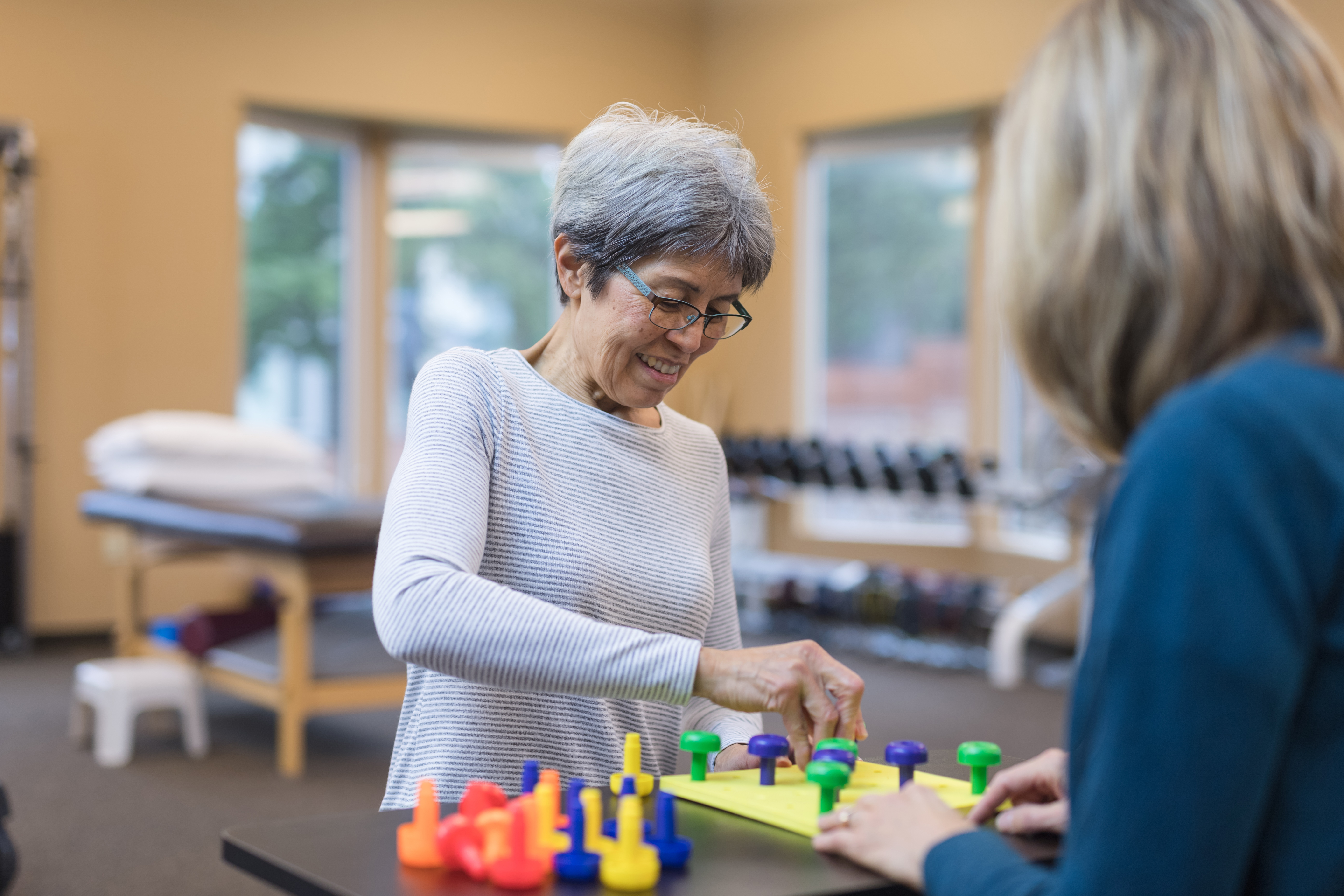
Have you ever thought about how often you use your hands? You type on your keyboard, hold your phone, open doors and use a fork and knife. It’s usually not until you start feeling a sharp pain or experiencing numbness that you think about just how important your hands are.
We take a closer look at hand therapy and what options you have should you experience an injury or have concerns about strength or mobility in your hands. Hand therapy is a specialty area of occupational therapy that is placed on the evaluation and treatment of the upper extremities such as the shoulders, arms, elbows, forearm, wrist and hand.
Q. What is hand therapy?
“Hand therapists focus on rehabilitating the upper extremity to restore function and independence,” explained Pattie Vongsoasup, MS, OTR/L, a hand therapist at Summit Health. The goal of hand therapy is to allow the patient to perform and participate in daily life activities comfortably.
Q. What are some common problems hand therapy can address?
Some common problems that therapists can help with include fractures, tendon repairs, arthritis, stiff hands or fingers, trigger fingers, tennis elbow, carpal tunnel and weakness after a traumatic event like a stroke, diseases such as arthritis or Parkinson’s, an accident or a congenital defect.
Q. When should I seek out treatment?
The hand is a complex part of the body comprised of joints, ligaments, muscles, tendons, nerves, blood vessels and bones, that work together and allow for a wide range of functions. When one part of the hand is impaired, function can be diminished or lost.
“Treatment should be sought out when any part of your upper extremity is experiencing pain and/or having difficulty moving (decreased range of motion) following a physical trauma or surgical intervention), interfering with your ability to perform functional activities independently,” said Ms. Vongsoasup. “Patients can also consult with a hand and wrist orthopedic surgeon within Summit Health for proper diagnosis.”
If you experience any pain or have difficulty moving your upper extremity, talk to your primary care physician or orthopedist about hand therapy. Many patients benefit from hand therapy after physical trauma or surgery that interferes with their ability to perform functional activities independently.
Q. What can I expect during treatment?
At your first visit, your hand therapist will conduct a comprehensive assessment and come up with an individualized treatment plan. This may include swelling, strength, range of motion and coordination measurements.
Your care plan will include a home exercise program that will be done in conjunction with therapy. “It is important that you schedule regular visits with your therapist and remain consistent with your home exercise plan to achieve the best results,” says Ms. Vongsoasup.
During your hand therapy sessions, the therapist will use a variety of techniques and tools to treat the affected upper extremity, which may include:
- Moist heat packs
- Ultrasound
- Electrical stimulation
- Paraffin
- Fluidotherapy
- Strengthening and coordination activities
Q. What will my hand therapist teach me?
Our specially trained hand therapists can teach you about the safe and proper use of equipment (ergonomics) such as computer keyboards. They also can train you about safe movement and things you should avoid to protect your hands from injury. They can help you regain the function you need to return to work after an injury or surgery.
Q. What are some common hand therapy and rehabilitation services?
- Exercises to restore range of motion and strength
- Custom finger splints to support joints, allowing tendons and muscles to heal
- Techniques to increase tissue extensibility, reduce pain and decrease swelling
- Methods for joint and soft tissue mobilization
- Training to restore, improve and maintain hand function
- Education on joint conversation and activity modification
- Sensory education
- Injury prevention
- Scar remodeling
- Wound care and management
Q. What is the patient’s role in therapy? How do I achieve the best outcome?
The goal of hand therapy is for patients to return to normal daily activities and life without pain and weakness. “The best outcomes occur when the patients apply the skills, they have learned in hand therapy to their daily activities,” says Ms. Vongsoasup. “Being consistent with regular home exercises will aid in the patient’s recovery and help them return to their normal level of function.”
Summit Health can help.
The hand therapy team at Summit Health specializes in evaluating and treating orthopedic conditions of the upper extremities in people of all ages. The group specializes in orthopedic rehabilitation for pediatric, adolescent, and adult patients. For more information, call 973-576-5543.
